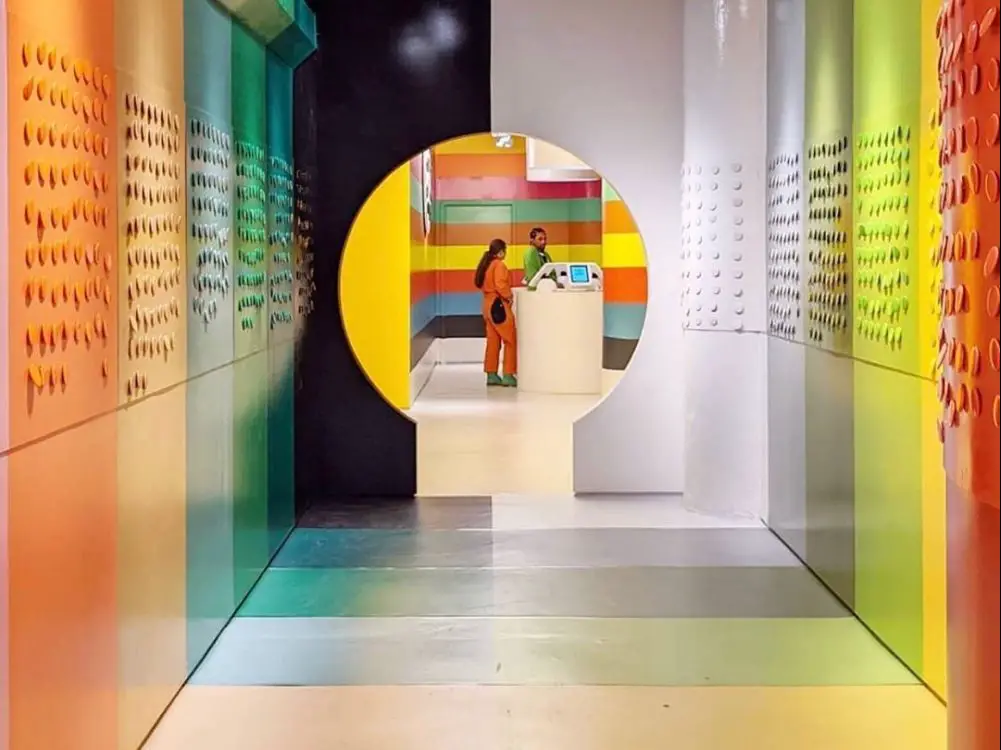In 2016, the Museum of Ice Cream opened in New York. The museum was an oddity, featuring extravagantly colored and decorated rooms with giant sweets and a game-changing pool full of rainbow sprinkles.
Despite New York hosting a number of excellent, nationally renowned museums full of age-old pieces from around the world and across centuries, 300,000 tickets to the Museum of Ice Cream sold within the first five days of its opening.
The museum quickly garnered thousands of followers and became the backdrop of thousands more photos and selfies on Instagram. However, the exhibits were simply staging for selfies, and not the focus of the posts.
But the city’s Museum of Ice Cream was not the first of its kind. In 2015, Refinery29 launched “29 Rooms,” an interactive exhibit full of visually stunning rooms with Instagrammable themes. Refinery29 never professed “29 Rooms” was designed for the purpose of creating shareable moments, but visitors have no issue in using the exhibit in such a manner.
https://www.instagram.com/p/BktOW6oBPej/?tagged=29rooms
More than 52,000 images on Instagram are tagged “29rooms,” and tickets for the forthcoming exhibit in Los Angeles at the end of the year are already sold out.
The most recent addition to the ranks of interactive, room-based museums is the New York City pop-up of the San Francisco-based Color Factory. In August, the exhibit will open, providing another adult playground and selfie destination in the city.
If you are curious as to what the installations of the East Coast edition of the Color Factory will involve, a variety of photos tagged on Instagram from the West Coast location will give you an idea of the outlandish wonder promised while you wait for tickets to go on sale.
https://www.instagram.com/p/BibIroqAzhW/?tagged=colorfactory
The craze surrounding the Color Factory and other museums of its kind is part of the way that social media has affected how individuals process experiences.
No longer are experiences simply valued in the way that they make people feel; rather, they are valued by the way they can be shared. If a tree falls in a forest and no one is around to hear, does the tree make a sound? In a more modern context, if a latte is purchased in a cute cafe and not shared on Instagram, was the latte even worth buying?
Instagram’s massive hold on society has both positive and negative effects, providing a tool for connecting and self-promotion at the cost of its users feeling pressure to constantly update their followers with new, lavish photos of their lifestyles. Others, often with the help of an Instagram affiliate marketing guide, use the platform to make money.
In his recently released album, Drake dedicated a song to the phenomenon. One of the album’s A-side tracks, “Emotionless,” features the artist addressing the obsession with gathering experiences strictly for the purpose of bragging on social media.
“I always hear people complain about the place that they live / That all the people here are fake and they got nothin’ to give / ‘Cause they been starin’ at somebody else’s version of– / That makes another city seem more excitin’ than it is /
I know a girl whose one goal was to visit Rome / Then she finally got to Rome / And all she did was post pictures for people at home / ‘Cause all that mattered was impressin’ everybody she’s known.”
The rat race of comparisons has infiltrated the art world and made even the sacred, personal experience of consuming art into a way of staging a photo for Instagram.
Although museums such as the Museum of Ice Cream and Color Factory are perhaps not made with the sole intention of becoming backdrops for visitors, they benefit massively from a society driven by social media.
Installation museums pose a wonderful opportunity to enjoy visually stimulating escapes from everyday life and often are meant for visitors to process as symbolic or meaningful. Attend them with the understanding that individual experience trumps any number of Instagram likes, and if you are feeling daring, leave the phone in the car.

















